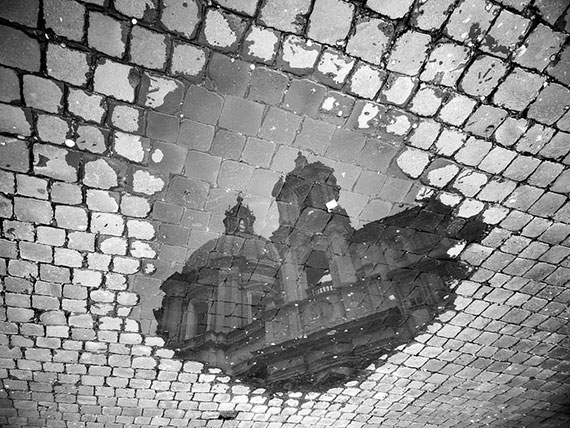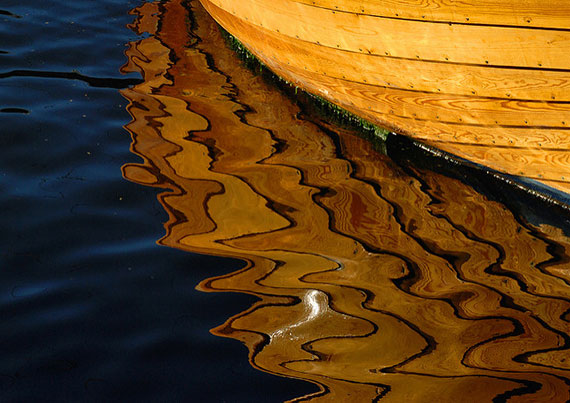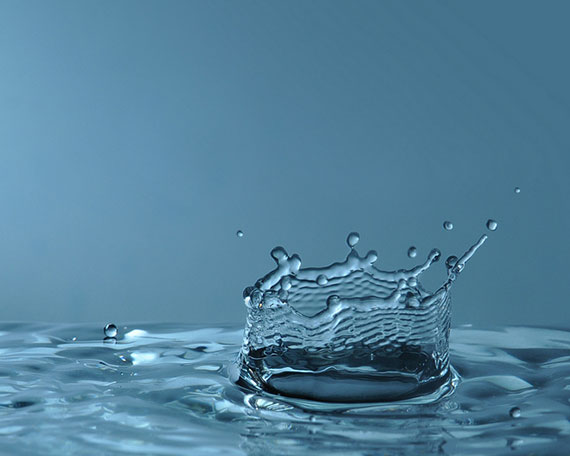If you believe that waves, waterscapes, and waterfalls pretty well use up all the opportunities that water provides for picture-taking, think again. Here are seven more photography tips with water—remedies for the photo doldrums!

Photo by Tomasz Baranowski; ISO 80, f/3.2, 1/400-second exposure.
1. Reflections
For a mirror reflection on water, the surface must be still and can’t have sunlight shining directly on it. When the light hits just above the shoreline (early morning or evening) leaving the water in shadow, or where something casts its shadow across the water, you’ll find such reflections.
2. Abstracts
Intriguing opportunities for abstract reflections occur when the water is gently swelling or rippling. Watch the water’s surface carefully for a while and you’ll begin to see the possibilities. Remember to vary your pictures by making several exposures at different shutter speeds. The unpredictability of this type of picture-making will provide unexpected surprises and new directions for future shootings.
3. Spray
Activities carried out with water present opportunities for picture-making. (Just make sure your camera is well protected and doesn’t get wet!) Look for opportunities to capture spray while watering a garden, sprinkling a lawn, or washing a vehicle.
4. Splash
Splashes make for great photo opportunities. Try dropping things into water or pouring water on a surface. Or, photograph waves as they crash onto the beach.
5. Bubbles
What about dishwashing bubbles and bubbles from children’s bubble-blowing toys? These yield interfering light effects with their crazy colors and patterns.
6. Foam
The froth that swirls and creeps up the beach after a wave has broken is quite photogenic.
7. Puddles
Puddles are just about everywhere after a period of rain—in a wide variety of sizes and shapes. During rainfall they present ring-patterns. Afterward, they display upside down reflections during both daylight and after dark if there are lights nearby.
Self-Assignments for Above Photography Tips
Choose the projects that interest you most. Follow the photography tips conscientiously. Re-shoot when you aren’t satisfied. It’ll take all your patience and passion. Your skills and eye will improve with the practice. Shoot especially in early and late light. Use a tripod as much as possible. Edit your results relentlessly. Pin small samples on the wall for a few days to study before making final prints for wall art.

Photo by Arild Storaas; ISO 140, f/5.6, 1/500-second exposure.
Reflections: Go to a pond or lake in either early morning or early evening when the water is in shadow. Locate an interesting reflection and line up a shot with just a minimum of shoreline and a maximum of reflection. Then take a shot of equal parts shore and reflection using a graduated neutral density filter to balance the lighting.
Abstracts: Find a stream or creek with running, swirling water, etc., and study the colors and tones being reflected in the running water from onshore and overhead things. Try to include something just in or on the water that you can clearly focus on as a center of interest. When you spot such an interesting abstract, shoot it, first with a faster shutter speed, and then with a much slower speed.
Spray: The next time you get out the lawn sprinkler, look for an angle that puts sparkle in the water and provides a dark background to shoot toward. Use both high and low shutter speeds, and compare the results.
Splash: Make a close-up of water as it’s poured into a glass filled with ice cubes.
Bubbles: Take a shot of some dish soap bubbles against a sheet of black paper while shining a beam of light at the bubbles.
Foam: Look for a depression on the beach where the foam from spent waves swirls, and do a shot with the swirl pattern in the foreground, using a slow shutter speed.
Puddles: Take a picture during the rain trying for an interesting pattern of raindrop circles. Make a nighttime shot of a puddle having either lit-up signs or office buildings nearby which are reflected in the puddle.

Photo by Enid Martindale; ISO 200, f/13.0, 1/200-second exposure.
In the next article of this set we’ll cover still more photography tips about water’s other warm season photo ops for overcoming the photo doldrums: condensation, hail, mist and fog.
About the Author:
John Maxymuik from AmbienceImages authored this article which is 1 of a set of 6 on Photography Tips for the Photo Doldrums providing tips to break the grip of the photo doldrums using the “ideal photo subject”. Maxymuik previously operated a website at ambienceimages.
Like This Article?
Don't Miss The Next One!
Join over 100,000 photographers of all experience levels who receive our free photography tips and articles to stay current:






Nice Tips Here I would like to share something. Use continuous shooting : Because the action of splashing water is very fast, it is unlikely to capture the exact moment in which the drop falls into the water, or in which the best ways are created after hitting the surface. Therefore, if we use continuous shooting or burst shooting, we can capture several photos runs, and then we can choose the best one.